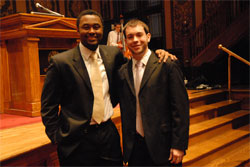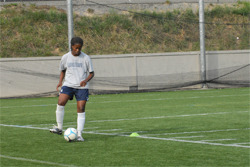Features
If it weren’t for the orange and black signs hanging outside, the District of Columbia Arts Center (DCAC) would be virtually invisible. A solitary door squashed between a junk shop and a pizza place opens to reveal stairs that lead to a shoebox of a gallery and, behind it, a pin box of a theater, which collectively comprise the District’s self-proclaimed “hub of alternative activity.”
DCAC, a non-profit gallery, theater, and educational center for artists and aspiring artists, bears all the characteristics of a makeshift, underground movement. One must venture outside in order to enter the theater, which used to be a garage. Meanwhile, the 750-square-foot gallery’s whitewashed walls reflect the open-ended, artist-centered vision that DCAC’s founder, Herb White (SFS `57), strived for from the time he founded the Center in 1989 until his death in June 2007.
By
Chelsea Paige
October 9, 2008




